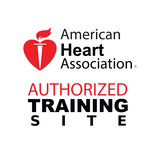Automatic External Defibrillation · 21. February 2016
The reason your heart beats properly is due to a beautiful design and perfect timing. Imagine you could design a spark plug with a built in timer that emits an electrical spark at a set rate. Let's say this plug's timer is set for one second. So every second, this spark plug will emit a spark unless another plug nearby does so first. If a neighboring plug sparks first, the original spark plug will simply carry the electrical impulse to the next plug and restart it's own timer. We'll call the...
12. February 2016
This episode of #askCarePoint, we discuss the question “What is CPR?” CPR stands for CardioPulmonary Resuscitation, and it’s a set of skills that can artificially restore oxygenated blood flow to someone whose heart has stopped beating properly. Once the need for CPR has been verified, the main components of the procedure are chest compressions, oxygenation and defibrillation. These components can be combined several ways depending on the condition of the victim, the ability of the...
18. October 2015
It's the moment we've all been waiting for! The new 2015 American Heart Association Guidelines for CPR and ECC have been released. These guidelines are designed to give structure and direction to professionals and laypersons responding to first aid emergencies and cardiac arrest events. While there are many changes of varying impact, we have compiled some of the most practical guideline updates for both professionals and lay providers below. Please note: If your position requires you to be...
22. March 2015
There's much to be learned from this successful resuscitation captured on video. Bondi Beach (pronounced "bond-eye") is located in Sydney, Australia. A non-swimmer is found unresponsive and floating in the surf. The well-trained and experienced lifeguards that patrol the beach spring into action and perform like a well-oiled machine to save the young man's life. As you watch the video (not for the faint-hearted) you'll see a practical application of today's current CPR guidelines:
17. February 2015
Learn the basic steps for you to use an automatic external defibrillator. It's a quick read, and could help you save someone's life!








